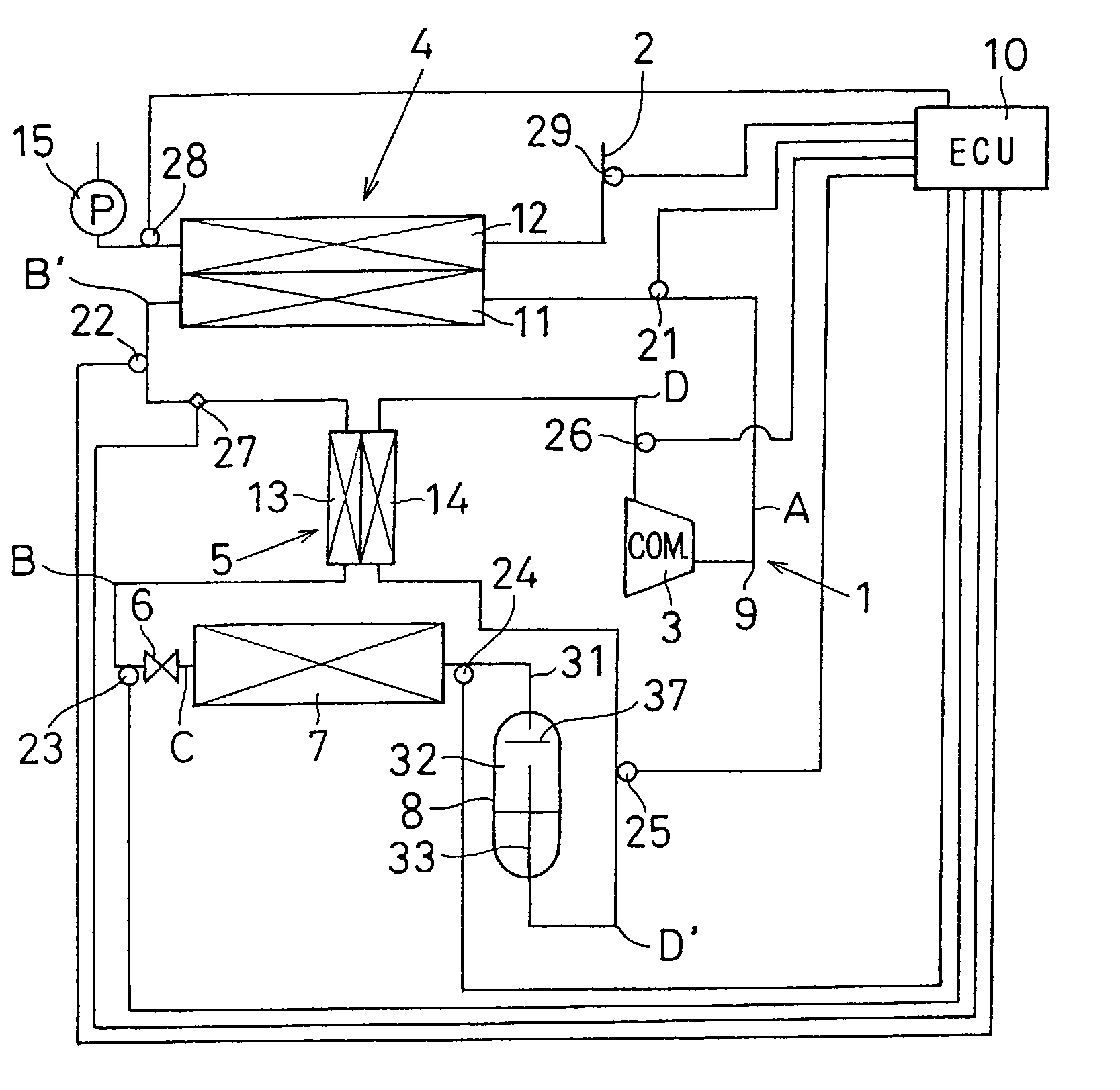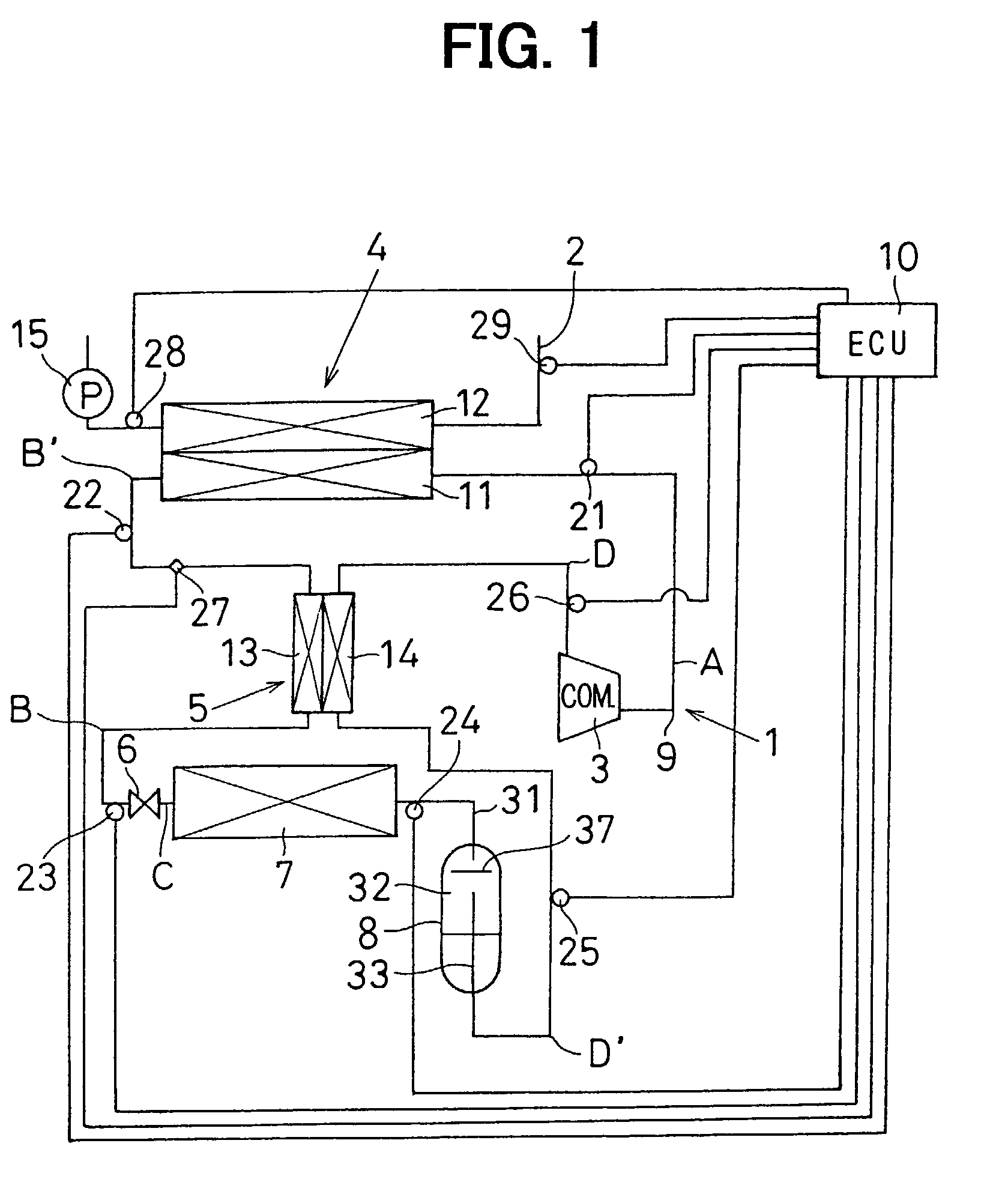Super-critical refrigerant cycle system and water heater using the same
a cycle system and super-critical technology, applied in the direction of machine operation, lighting and heating apparatus, heat pump, etc., can solve the problems of reducing the life of components increasing the production cost of the heat pump cycle, and abnormally increasing the temperature of the refrigerant discharged from the refrigerant compressor, etc., to achieve the effect of increasing the heat-exchange amount of the internal heat exchanger, restricting the heat-exchange amount of the internal heat exchang
- Summary
- Abstract
- Description
- Claims
- Application Information
AI Technical Summary
Benefits of technology
Problems solved by technology
Method used
Image
Examples
first embodiment
[0022]A heat-pump water heater according to the first embodiment is an electric water heater mainly operated at night using midnight power that is cheaper in running cost, for example. As shown in FIG. 1, the heat-pump water heater includes a heat pump unit 1 used as a heat source for heating water, a hot water pipe 2, and an electronic control unit (ECU) 10 for electronically controlling actuators of the heat pump unit 1 and the hot water pipe 2. The hot water pipe 2 is for supplying water (fluid) heated by the heat pump unit 1, to a hot water tank (not shown), or to a bathroom and a washroom. In the first embodiment, the heat-pump water heater is constructed by a super-critical vapor-compression refrigerant cycle system.
[0023]The heat pump unit 1 includes a refrigerant compressor 3, a water-refrigerant heat exchanger (radiator) 4, an internal heat exchanger 5, a decompression valve 6, a refrigerant evaporator 7, an accumulator 8 and refrigerant pipe 9 connecting these components i...
second embodiment
[0044]In the second embodiment, the structure of the accumulator 8 shown in FIG. 1 is described in detail. As shown in FIG. 8A, the accumulator 8 includes a container body 30 having an elliptical cross-section, an inlet pipe 31 for introducing refrigerant into the container body 30 from the refrigerant evaporator 7, a storage chamber 32 for temporarily storing refrigerant flowing into the container body 30, an outlet pipe 33 for supplying the refrigerant stored in the storage chamber 32 to the suction side of the refrigerant compressor 3, and the like. The outlet pipe 33 is connected to the suction side of the refrigerant compressor 3 outside the storage chamber 32 of the accumulator 8.
[0045]An opening (gas-refrigerant return opening) 34 is provided on the outlet pipe 33 at its top end inside the storage chamber of the accumulator 8. An oil return hole 35 for introducing lubricating oil (e.g., refrigerator oil such as PAG) into the outlet pipe 33 from the storage chamber 32 is provi...
PUM
 Login to View More
Login to View More Abstract
Description
Claims
Application Information
 Login to View More
Login to View More - R&D
- Intellectual Property
- Life Sciences
- Materials
- Tech Scout
- Unparalleled Data Quality
- Higher Quality Content
- 60% Fewer Hallucinations
Browse by: Latest US Patents, China's latest patents, Technical Efficacy Thesaurus, Application Domain, Technology Topic, Popular Technical Reports.
© 2025 PatSnap. All rights reserved.Legal|Privacy policy|Modern Slavery Act Transparency Statement|Sitemap|About US| Contact US: help@patsnap.com



